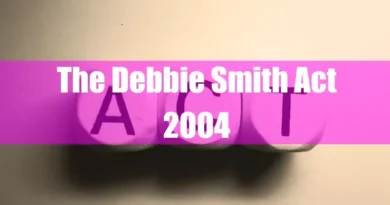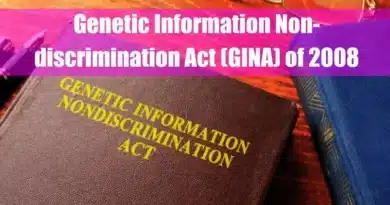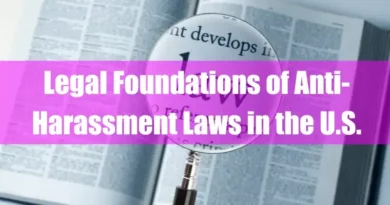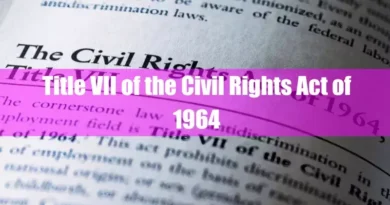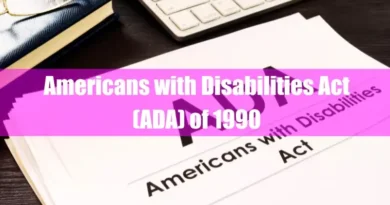Fair Housing Act (FHA) of 1968
Takeaways
| Key Points |
|---|
| The Fair Housing Act (FHA) was a pivotal piece of civil rights legislation passed in 1968, largely driven by efforts from key legislators like Senators Edward Brooke and Walter Mondale, with significant backing from President Lyndon B. Johnson, who saw it as essential to his “Great Society” vision. |
| This law prohibits housing discrimination based on race, color, religion, sex, and national origin, later expanded in 1988 to include protections for familial status and disability. |
| The FHA defines discriminatory practices broadly, encompassing both overt actions like refusing to rent or sell and more subtle ones such as steering or discriminatory advertising. |
| Enforcement is overseen by the U.S. Department of Housing and Urban Development (HUD), which handles complaints, investigates violations, and can refer cases to administrative hearings or the Department of Justice, offering remedies like monetary damages and injunctive relief. |
| Landmark cases like Trafficante v. Metropolitan Life Insurance Co. and Texas Department of Housing and Community Affairs v. Inclusive Communities Project have reinforced the FHA’s reach, ensuring it addresses both direct and systemic discrimination. |
Introduction
Brief Overview of the Fair Housing Act (FHA) of 1968
The Fair Housing Act (FHA) of 1968 is a pivotal piece of civil rights legislation that sought to eliminate discrimination in housing based on race, color, religion, sex, and national origin. As part of the Civil Rights Act of 1968, the FHA was designed to combat systemic housing discrimination across the United States.
The Act marked a significant step towards ensuring equal access to housing opportunities for all individuals regardless of their background.
Historical Context: Civil Rights Movement and the Assassination of Dr. Martin Luther King Jr.
The FHA was enacted against the backdrop of the Civil Rights Movement, a period of intense social and political activism aimed at ending racial segregation and discrimination in the United States. The movement, which gained momentum in the 1950s and 1960s, sought to address inequalities in education, employment, and public accommodations.
The assassination of Dr. Martin Luther King Jr. on April 4, 1968, further galvanized support for civil rights legislation. Dr. King, a prominent leader in the movement, had advocated for economic justice and fair housing, making his death a catalyst for the swift passage of the FHA.
Purpose and Significance of the FHA in U.S. Housing Law
The FHA was intended to dismantle the legal and institutional barriers perpetuating housing discrimination. By prohibiting discriminatory practices in the sale, rental, and financing of housing, the Act aimed to promote residential integration and provide equal housing opportunities for all Americans.
The FHA’s significance extends beyond its immediate impact; it laid the foundation for subsequent legislation and policies addressing housing inequality.
The Act remains a critical tool in the ongoing fight against discrimination in the housing sector.

Legislative Background
Key Legislators and Political Context During the Passage
The FHA passage resulted from concerted efforts by several key legislators and civil rights advocates. Senator Edward Brooke, the first African American elected to the Senate by popular vote, played a crucial role in championing the Act. Senator Walter Mondale also emerged as a key figure, advocating for the legislation despite significant opposition from some quarters.
The political context of the time, marked by widespread civil unrest and growing public support for civil rights, helped create the momentum needed to pass the FHA.
Role of President Lyndon B. Johnson
President Lyndon B. Johnson was instrumental in passing the FHA. He was strongly committed to civil rights, as evidenced by his earlier work pushing through the Civil Rights Act of 1964 and the Voting Rights Act of 1965. Johnson viewed the FHA as a vital part of his broader vision for a “Great Society” that sought to eliminate poverty and racial injustice. He used his political acumen to rally support for the FHA, emphasizing its importance in achieving racial equality.
Comparison with Other Civil Rights Laws of the Era
The FHA stands alongside other landmark civil rights legislation of the 1960s, such as the Civil Rights Act of 1964 and the Voting Rights Act of 1965. While the Civil Rights Act of 1964 addressed discrimination in employment and public accommodations, and the Voting Rights Act of 1965 sought to protect the voting rights of African Americans, the FHA specifically targeted discrimination in housing.
Together, these laws formed a comprehensive legal framework aimed at dismantling systemic racism and promoting equality in various aspects of American life.
Core Provisions of the FHA
Prohibition of Discrimination: Race, Color, Religion, Sex, and National Origin
The core of the FHA is its prohibition against housing discrimination based on race, color, religion, sex, and national origin. This provision applies to selling, renting, and financing dwellings and other housing-related transactions.
The FHA makes it illegal to refuse to sell or rent a dwelling to someone based on these protected characteristics, to discriminate in the terms or conditions of a housing transaction, or to misrepresent housing availability.
Expansion to Familial Status and Disability in 1988 Amendments
The FHA was significantly expanded in 1988 with the passage of the Fair Housing Amendments Act, which added familial status and disability to the list of protected classes. Familial status refers to households with children under 18, pregnant women, and individuals in the process of securing custody of a child.
The inclusion of disability protections aimed to ensure that individuals with physical or mental disabilities had equal access to housing and required landlords to make reasonable accommodations.
Definition and Scope of “Discriminatory Practices”
The FHA broadly defines “discriminatory practices” as a range of behaviors that can impede fair housing access. These practices include outright refusal to sell or rent and more subtle discrimination, such as steering prospective buyers or renters to certain neighborhoods based on race or national origin.
The Act also prohibits discriminatory advertising and the use of different terms or conditions in housing transactions for different groups of people.

Enforcement Mechanisms
Role of the U.S. Department of Housing and Urban Development (HUD)
The U.S. Department of Housing and Urban Development (HUD) is primarily responsible for enforcing the FHA. HUD investigates housing discrimination complaints and has the authority to bring charges against individuals or entities found to be violating the Act.
HUD also provides resources and guidance to help individuals understand their rights under the FHA and to assist housing providers in complying with the law.
Legal Actions and Remedies Available Under the FHA
The FHA provides several legal avenues for individuals who believe they have been victims of housing discrimination. Victims can file a complaint with HUD, which will investigate the matter and attempt to resolve it through conciliation. If conciliation fails, the case may proceed to an administrative hearing or be referred to the Department of Justice for legal action.
Remedies available under the FHA include monetary damages, injunctive relief, and civil penalties.
Landmark Enforcement Cases and Their Impact on the Law’s Interpretation
Several landmark cases have shaped the interpretation and enforcement of the FHA. One such case is Trafficante v. Metropolitan Life Insurance Co., where the Supreme Court ruled that tenants could bring claims under the FHA even if they were not the direct victims of discrimination but were harmed by it. Another significant case is Texas Department of Housing and Community Affairs v. Inclusive Communities Project, Inc., which upheld the use of disparate impact claims under the FHA, allowing plaintiffs to challenge practices that disproportionately affect protected groups, even if there is no intentional discrimination.
Impact on Housing Segregation
Analysis of the FHA’s Effectiveness in Reducing Segregation
The FHA has had a mixed impact on housing segregation. While it has contributed to reducing overt discriminatory practices, its effectiveness in reducing residential segregation has been limited. Patterns of segregation persist in many U.S. cities, largely due to economic disparities, historical zoning practices, and ongoing discrimination.
The Act has made it more difficult to enforce explicitly racist housing policies, but it has not fully eradicated segregation.
Major Studies and Reports on Housing Patterns Pre- and Post-FHA
Numerous studies have examined housing patterns before and after the passage of the FHA. These studies indicate that while there has been some progress in desegregation, particularly in the South, many metropolitan areas remain highly segregated.
Reports by organizations such as the Urban Institute and the National Fair Housing Alliance highlight the continued challenges in achieving full integration and the need for stronger FHA enforcement.
Continuing Challenges in Combating Housing Discrimination
Despite the progress made since the enactment of the FHA, housing discrimination remains a significant issue. Challenges include subtle discrimination that is harder to detect and prove and the persistence of discriminatory lending practices, such as redlining.
Additionally, enforcement of the FHA is often hampered by limited resources and varying levels of commitment from different administrations. Addressing these challenges requires ongoing vigilance and policy innovation.

Amendments and Modern Developments
2013: Introduction of the “Discriminatory Effects Standard” Rule
In 2013, HUD introduced the “Discriminatory Effects Standard” rule, which formalized the use of disparate impact claims under the FHA. This rule clarified that practices with a discriminatory effect could be challenged under the FHA, even if there was no intent to discriminate.
The rule aimed to provide clearer guidance on how disparate impact claims should be evaluated and to strengthen the enforcement of fair housing laws.
2020: Alterations to the 2013 Rule Under the Trump Administration
In 2020, the Trump administration rolled back key aspects of the 2013 “Discriminatory Effects Standard” rule, making it more difficult for plaintiffs to bring disparate impact claims. The revised rule introduced a higher burden of proof for plaintiffs and provided more defenses for housing providers accused of discrimination.
This change was met with significant opposition from civil rights groups, who argued that it weakened protections against housing discrimination.
2023: Reinstatement and Strengthening of the “Discriminatory Effects Standard” Under the Biden Administration
In 2023, the Biden administration reinstated and strengthened the “Discriminatory Effects Standard” rule. This move was part of a broader effort to restore and enhance civil rights protections that had been weakened in the previous administration.
The reinstated rule made it easier for individuals to challenge discriminatory practices and reaffirmed the government’s commitment to combating housing discrimination.
2023: Revision of the “Affirmatively Furthering Fair Housing” (AFFH) Rule
The “Affirmatively Furthering Fair Housing” (AFFH) rule, originally introduced in 2015 under the Obama administration, was revised in 2023 to provide clearer guidance on how jurisdictions should comply with the FHA’s mandate to promote fair housing. The revised rule emphasized the need for local governments to take proactive steps to address segregation and promote integration.
It also introduced new reporting requirements to ensure accountability.

Challenges and Criticisms
Limitations in Enforcement and Gaps in the Legislation
While the FHA has been a crucial tool in the fight against housing discrimination, its enforcement has faced significant limitations. One primary challenge is relying on individuals to report discrimination, which can lead to underreporting, particularly among vulnerable populations who may fear retaliation or lack awareness of their rights.
Additionally, the resources available to HUD and other agencies responsible for enforcing the FHA are often stretched thin, limiting their ability to pursue all discrimination cases effectively. The Act also leaves certain areas, such as discrimination based on income or sexual orientation, unaddressed, leading to ongoing debates about the need for further legislative updates.
Critiques from Civil Rights Groups Regarding the Slow Pace of Desegregation
Civil rights groups have long criticized the slow pace of desegregation, even in the decades following the FHA’s passage. These organizations argue that while the Act made it illegal to discriminate overtly, it did little to address the deep-rooted systemic issues that perpetuate segregation, such as unequal access to quality education and economic opportunities.
Critics point out that residential segregation remains pervasive in many parts of the country, particularly in urban areas, and that more robust measures are needed to achieve true integration.
Legal and Societal Obstacles Faced by Victims of Housing Discrimination
Victims of housing discrimination often face significant legal and societal obstacles when seeking justice. The burden of proof in discrimination cases can be high, requiring victims to demonstrate that they were treated differently because of a protected characteristic.
Even when discrimination is evident, the legal process can be lengthy and complex without guaranteeing a favorable outcome. Societal barriers, such as stigmatization and economic hardship, further complicate the situation, making it difficult for victims to pursue their cases and secure fair treatment.

Landmark Court Cases
Overview of Significant Supreme Court Rulings Interpreting the FHA
Several Supreme Court rulings have significantly shaped the interpretation and application of the FHA. One of the most notable cases is Jones v. Alfred H. Mayer Co. (1968), where the Court held that Congress could regulate the sale of private property to prevent racial discrimination, reinforcing the FHA’s authority. Another important case is City of Edmonds v. Oxford House, Inc. (1995), which clarified that local zoning laws must comply with the FHA’s provisions, particularly regarding disability accommodations.
Case Studies Illustrating the Broad and Narrow Interpretations of the Law
The interpretation of the FHA has varied widely in different legal contexts, leading to broad and narrow law applications. In Texas Department of Housing and Community Affairs v. Inclusive Communities Project, Inc. (2015), the Supreme Court upheld the use of disparate impact claims, allowing plaintiffs to challenge policies that disproportionately affect minorities, even without evidence of intentional discrimination. Conversely, in cases like Town of Huntington v. Huntington Branch, NAACP (1988), courts have sometimes taken a narrower view, focusing on specific instances of discrimination rather than broader patterns.
The Role of Disparate Impact Claims in Fair Housing Litigation
Disparate impact claims have become a critical tool in fair housing litigation, allowing plaintiffs to challenge practices that have a discriminatory effect, regardless of intent. These claims are particularly important in addressing systemic issues, such as lending practices that disproportionately harm minority communities. However, using disparate impact claims has been contentious, with opponents arguing that they impose unfair burdens on housing providers and may lead to unintended consequences.
Despite these debates, disparate impact remains a key mechanism for enforcing the FHA and promoting fair housing.

Affirmatively Furthering Fair Housing (AFFH)
Explanation of the AFFH Mandate and Its Historical Evolution
The Affirmatively Furthering Fair Housing (AFFH) mandate is a provision of the FHA that requires federal agencies and recipients of federal funding to promote fair housing and take steps to eliminate segregation actively. The AFFH mandate has evolved over the years, with varying levels of emphasis depending on the administration
Initially, the mandate was not strongly enforced. Still, efforts have been made to clarify and strengthen its requirements, particularly in holding jurisdictions accountable for making measurable progress toward integration.
2015 AFFH Rule Under the Obama Administration
In 2015, the Obama administration introduced a new AFFH rule to provide clearer guidance on how jurisdictions should comply with the mandate. The rule required cities and states receiving federal housing funds to conduct comprehensive assessments of local housing patterns and identify barriers to fair housing. It also encouraged them to set goals for reducing segregation and increasing access to affordable housing.
This rule significantly shifted towards a more proactive approach to fair housing, emphasizing the need for data-driven strategies to address systemic discrimination.
Rollback of the 2015 Rule in 2020
The 2015 AFFH rule faced significant changes under the Trump administration, which rolled back many of its provisions in 2020. The rollback replaced the rule with a new framework that reduced the emphasis on data collection and reporting and shifted focus towards local control over housing decisions.
Critics argued that these changes undermined efforts to address segregation and allowed jurisdictions to avoid taking meaningful action to promote fair housing. The rollback was seen as a step back from the progress made under the Obama administration.

Reinstatement and Revision of AFFH in 2023 Under the Biden Administration
In 2023, the Biden administration reinstated and revised the AFFH rule, reaffirming the federal government’s commitment to promoting fair housing. The revised rule restored many of the provisions from the 2015 rule, including the requirement for jurisdictions to conduct detailed assessments of fair housing conditions and set actionable goals for improvement.
The Biden administration also introduced new measures to enhance transparency and accountability, ensuring jurisdictions take meaningful steps to reduce segregation and expand housing opportunities for all.
Current Status and Future Directions Under Federal Housing Policies
As of 2023, the AFFH rule is once again a central component of federal housing policy. The Biden administration’s revisions have strengthened the mandate’s enforcement, focusing on achieving tangible outcomes in the fight against housing discrimination.
Looking ahead, the future of AFFH will likely involve ongoing efforts to refine the rule and address emerging challenges, such as the impact of gentrification and the need for affordable housing in diverse communities. The federal government’s role in promoting fair housing remains crucial, and the AFFH mandate will continue to evolve to meet the needs of an increasingly complex housing landscape.

FHA in the Modern Era
The Impact of the FHA on Today’s Housing Market
The FHA continues to play a vital role in shaping today’s housing market by providing legal protections against discrimination and promoting inclusivity. While the Act has been instrumental in reducing overt discrimination, the housing market still faces significant challenges, including affordability issues, gentrification, and subtle forms of bias.
The FHA’s influence is seen in the increased awareness of fair housing rights and the ongoing efforts to ensure all individuals have equal access to housing opportunities.

Integration with Other Civil Rights and Anti-Discrimination Laws
The FHA is integrated with other civil rights and anti-discrimination laws, creating a comprehensive framework for protecting individuals from various forms of discrimination. The FHA complements laws such as the Americans with Disabilities Act (ADA) and the Equal Credit Opportunity Act (ECOA), which address discrimination in other areas related to housing and lending.
Together, these laws form a robust legal structure that helps safeguard individuals’ rights and promote fairness in housing-related transactions.
The Role of Technology and Data in Monitoring Compliance and Trends
Technology and data have become increasingly important in monitoring compliance with the FHA and identifying trends in housing discrimination. Advanced data analytics allow for more effective tracking of housing patterns and detecting discriminatory practices, such as redlining and predatory lending.
Additionally, technology enables greater transparency and accountability, providing tools for regulators and consumers to uphold fair housing laws. The use of technology in fair housing enforcement is likely to continue growing, offering new opportunities to address discrimination in the housing market.
Conclusion
The Fair Housing Act of 1968 remains a cornerstone of U.S. civil rights legislation, providing critical protections against housing discrimination.
While the Act has made significant progress in promoting fair housing, ongoing challenges require continued vigilance and policy adaptation to ensure that all individuals have access to safe and equitable housing.
The FHA’s legacy is a triumph and ongoing struggle, reflecting the complexities of addressing deeply rooted social issues in the housing sector.
As the nation moves forward, the principles enshrined in the FHA will continue to guide efforts to create a more just and inclusive society.
FAQ
What types of housing are exempt from the Fair Housing Act?
The Fair Housing Act exempts owner-occupied buildings with no more than four units, single-family homes sold or rented without a broker, and housing operated by religious organizations or private clubs that limit occupancy to members.
Does the Fair Housing Act protect against discrimination based on sexual orientation or gender identity?
As of 2021, the U.S. Department of Housing and Urban Development (HUD) enforces the Fair Housing Act to prohibit discrimination based on sexual orientation and gender identity, interpreting them under the Act’s prohibition of sex discrimination.
How does the Fair Housing Act address discriminatory advertising?
The Act prohibits making, printing, or publishing any notice, statement, or advertisement that indicates any preference, limitation, or discrimination based on protected characteristics, ensuring that housing-related advertising is free from bias.
Are there any exceptions for housing intended for older persons?
Yes, the Act allows for housing intended for persons aged 55 or older, provided that at least 80% of the units are occupied by at least one person aged 55 or older and the housing facility or community publishes and adheres to policies demonstrating intent to serve this age group.
What is “steering” in the context of the Fair Housing Act?
“Steering” refers to the practice of guiding prospective buyers or renters toward or away from certain neighborhoods based on protected characteristics, which is prohibited under the Act as it perpetuates segregation.
Can a landlord refuse to rent to someone with a criminal record under the Fair Housing Act?
While the Act doesn’t list criminal history as a protected characteristic, HUD guidance warns that blanket bans on renting to individuals with criminal records may violate the Act if they result in a disparate impact on protected groups.
How does the Fair Housing Act apply to mortgage lending?
The Act prohibits discrimination in residential real estate-related transactions, including making loans for purchasing, constructing, improving, repairing, or maintaining a dwelling and in the terms or conditions of such loans.
What is the statute of limitations for filing a Fair Housing Act complaint?
Individuals must file a complaint with HUD within one year of the alleged discriminatory Act or file a lawsuit in federal or state court within two years.
Does the Fair Housing Act cover short-term rentals like Airbnb?
The Act applies to short-term rentals if the property owner is not residing in the dwelling during the rental period and if the property doesn’t qualify for any exemptions, such as the “Mrs. Murphy” exemption for owner-occupied buildings with four or fewer units.
How are reasonable accommodations for disabilities defined under the Fair Housing Act?
Reasonable accommodations are changes to rules, policies, practices, or services that may be necessary for a person with a disability to have equal opportunity to use and enjoy a dwelling, such as allowing service animals in a no-pets building.
Citations
- Fair Housing Act | US Civil Rights Law, 1968. (2024, April 4). Encyclopedia Britannica. https://www.britannica.com/topic/Fair-Housing-Act
- History of Fair Housing – HUD. (n.d.). HUD.gov / U.S. Department of Housing And Urban Development (HUD). https://www.hud.gov/program_offices/fair_housing_equal_opp/aboutfheo/history#:~:text=The%201968%20Act%20expanded%20on,Housing%20Act%20(of%201968).




